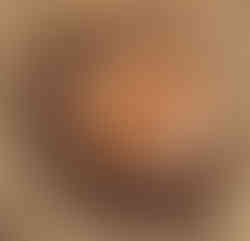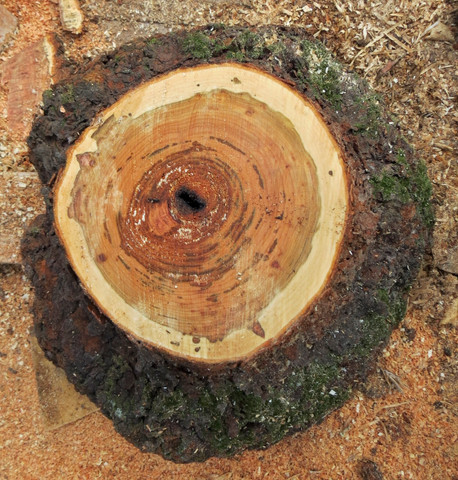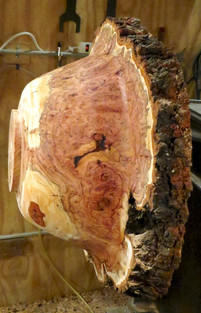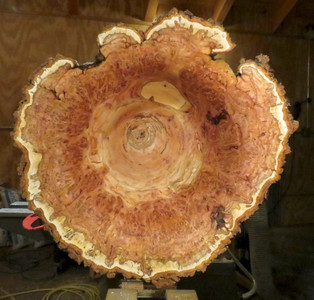Turning a 300 pound Cherry Burl
It is not every day that a person stops by my shop with a large burl. This cherry burl was about 2 ft in diameter and very heavy. I cut it in half in preparation for two end-grain bowls. The two pieces are shown below. Click on an image to enlarge it.
The small holes near the center go through the entire burl and contained an active ant's nest. Insect spray took care of the ants and small holes like this are easy to fill and seal in the bottom of a bowl. The next gallery of images shows the turning of the burl piece on the right above.
The next gallery shows the turning of the second burl piece, the one to the left in the photo of the cut burl pieces above.
Both bowls are about 21" in diameter and between 7 and 8" deep. They have different shapes in that the first one has a wider bottom. Deciding shape happens during the turning process and largely dictated by the shape of the burl and the wood grain (figuring, patterns, colors). These burl pieces were heavy (about 100 pounds each) requiring the use of my shop crane to hoist them onto the lathe. The second image above shows the crane being used to lift and rotate a partly turned bowl for hollowing. The grain figuring and colors these fresh turned bowls are beautiful, even at this early stage. They will be spectacular when dry/sanded/oiled. The live bark edge adds a lot to these bowls. These bowls were turned end-grain so the center or pith of the tree is located in the bottom, near the center. The small holes in the bottom of each bowl was caused by the ant's next. These holes are filled and sealed and did not cause a problem. Turning any hard wood burl end-grain is a tedious process, especially during the hollowing. The last image above shows the turnings that resulted just from the hollowing of the second bowl. These turnings are fine like sand, not the long twisted turnings that one gets when turning at an angle to the grain. It took me over 3 hours to just hollow out each of these bowls.
These bowls are now drying under controlled temperature and humidity with frequent monitoring for the first several weeks. Cherry burl likes to crack as it dries. These cracks generally start small from the edges and from the center of the bowl and can be stopped with a few drops of thin CA glue, but they have to be caught before growing. This is a bit tricky, but generally works. If a crack grows it can be filled and stopped by using fine ground coffee beans and thin CA glue. The coffee actually speeds the hardening of the CA glue, and a small dark line in a bowl is not a big issue.




















































Comments